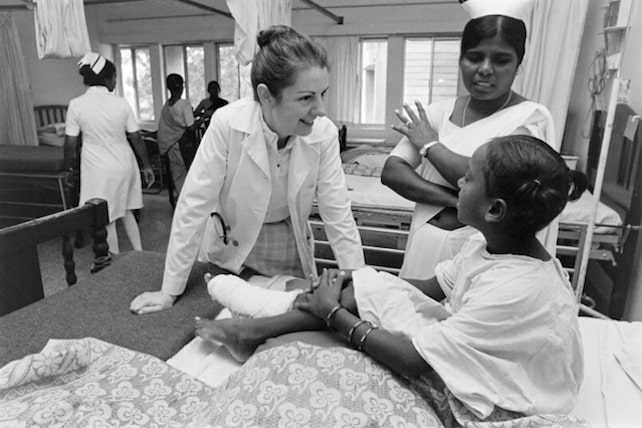“We grew up together,” she said, referring to her long relationship with the hospital and the people who work there.
Along the way, there were struggles, including conflict with the Indian government and a decision by the SBC’s International Mission Board to sell the hospital in the late 1980s. The mission board was moving away from running institutions such as hospitals because of the costs involved.
“That came as a shock,” she said. “And of course, with a lot of sadness.”
Selling the hospital proved difficult, Naylor said, because it was so valuable that no one could afford it. Eventually, she helped negotiate an agreement with Christian Medical College, a school founded by missionaries in the early 1990s that educates health care professionals.
God made a way for the hospital to continue to grow and thrive, said Naylor, who as leader had a knack for getting things done and the ability to adapt when things did not go the way she planned.
“We were always moving forward,” she said. “I was a planner. But very much trusting God to just show us what those next steps could be.”
Naylor’s long service and can-do attitude helped inspire other medical professionals to put their training to work in missions, said Rick Dunbar, an emergency room doctor and former chair of the IMB’s board of trustees. Dunbar called Naylor both a friend and one of his heroes. In recent years, he said, the two have worked together in promoting the mission board’s medical work. Dunbar said he’s been inspired by her ability to focus and her dedication to living out her faith.
“After she discerns God’s will for her—she pursues it with a bulldog tenacity,” he said.
Along with that tenacity comes a tenderness, he said, and care for the people she works with. And a desire to help others see how they can live out their faith. He described Naylor as magnetic—attracting people to her and inspiring them to join in the work.
One example of that: In the 1990s, she stepped down as CEO of the hospital and turned that role over to an Indian leader. Then she stayed on staff, serving as his No. 2 leader. It took a while for the staff to adjust, she said. But when someone asked her a question, she deferred and pointed them to the new CEO. Doing so was essential for the hospital’s future, she said.
“I very much wanted the hospital to have a long life,” she said. “And if it were going to have a long life, it had to have strong local leadership.”

